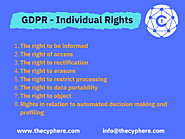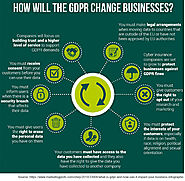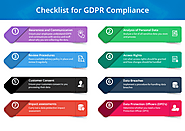-
About
- About Listly
- Community & Support
- Howto
- Chrome Extension
- Bookmarklet
- WordPress Plugin
- Listly Premium
- Privacy
- Terms
- DMCA Copyright
- © 2010-2025 Boomy Labs

 Harrison Bane
Harrison Bane
Listly by Harrison Bane
The GDPR (General Data Protection Regulation) is an EU regulation that sets out guidelines and rules for how organizations must protect the data of European citizens. GDPR applies to all businesses that operate within the European Union, as well as those outside of it who deal with European customers or process their personal data. It replaces the outdated Data Protection Directive 95/46/EC and was designed to give individuals more control over the way their information is collected and used by businesses.

The GDPR (General Data Protection Regulation) is an EU regulation that sets out guidelines and rules for how organizations must protect the data of European citizens. GDPR applies to all businesses that operate within the European Union, as well as those outside of it who deal with European customers or process their personal data.

GDPR is the acronym for General Data Protection Regulation, the law that specifies the personal data protection rules and requirements for organizations in the EU.
This means that GDPR applies to organizations that operate in the European Union or process the personal data of EU citizens, even if the organization is working outside of the EU.

The General Data Protection Regulation Act’s basic principles can be covered in eight points. At its core, GDPR states that individuals have the right to.

According to the GDPR document, the law defines and ensures the rights of EU citizens regarding their personal data. Thus, GDPR can’t be directly applied just to any organization from the USA. However, an organization based in the USA or with headquarters in the USA should maintain GDPR compliance in certain circumstances.

The main idea behind the GDPR act is privacy. To maintain the appropriate level of customer data privacy to comply with GDPR, an organization’s departments must thoroughly analyze their data and how they use it.
Whether you are only making your first steps on the road to GDPR compliance or checking how compliant you are, the following recommendations can help you find the right points to focus on.

When considering how to comply with GDPR, leaders and managers tend to concentrate on processes and security measures that reinforce production environments. However, security measures don’t guarantee that your production infrastructures will remain protected from malware and hacking threats.
